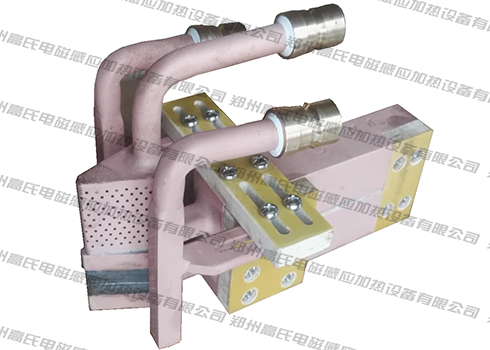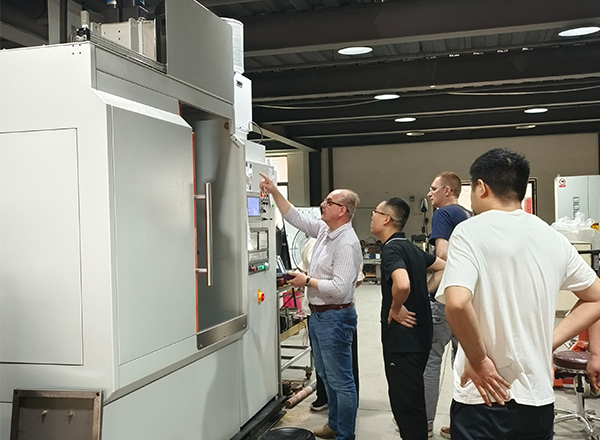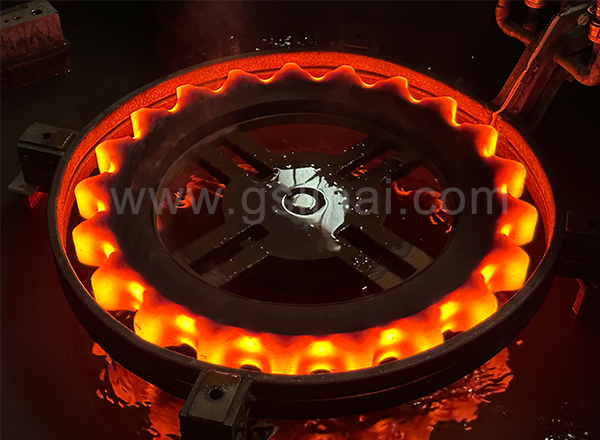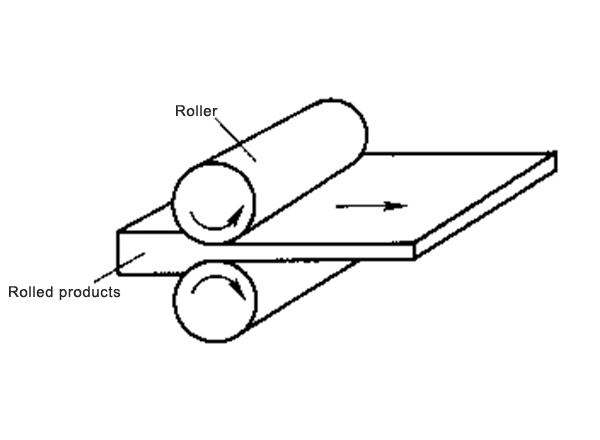
The hammer forging die is a die specially used to manufacture gun barrels. When producing blanks, the inside of the die cavity will bear the impact pressure generated by the blow, and the working environment is very bad. Therefore, the forging die itself is required to have high Wear resistance and heat resistance, good impact toughness, not easy to deform and so on. In continuous experience, we found that 5CrNiMo steel has the advantages of good hardenability, hardenability, decarburization or overheating sensitivity, and is very suitable as a material for making hammer forging dies. When producing hammer forging dies, the overall rough machining is performed first, and then the cavity is directly formed and finished, and then it is quenched and tempered by a high-frequency heating machine. During heating, due to the large size of the module, we The final heat treatment should be carried out after preliminary heat treatment to avoid oxidation and decarburization inside the cavity of the large hammer forging die.
When heat-treating large hammer forging dies, the temperature of the heating equipment should be adjusted to 550-600°C. After the mold is heated for 2 hours, it is then placed in an environment of 480-500°C for about 7 hours. After preparatory heat treatment, adjust the temperature of the high-frequency heating machine to within 900°C, place the hammer forging die inside to heat for 2 hours, and then quench and cool. When cooling, the mold should be cooled in the air to about 760°C, then put in oil to cool for 10 minutes, and then put it in the air to continue cooling to about 220°C for tempering. Remember to use an infrared thermometer when tempering Measure the temperature of the hammer forging die and adjust it in time to ensure that the temperature will not change within the allowable range. After cooling, the large hammer forging die produced will not have any defects, and the inner cavity of the die is intact and can be reused many times.




 en
en  cn
cn  jp
jp  ko
ko  de
de  es
es  it
it  ru
ru  pt
pt  vi
vi  th
th  pl
pl 



















